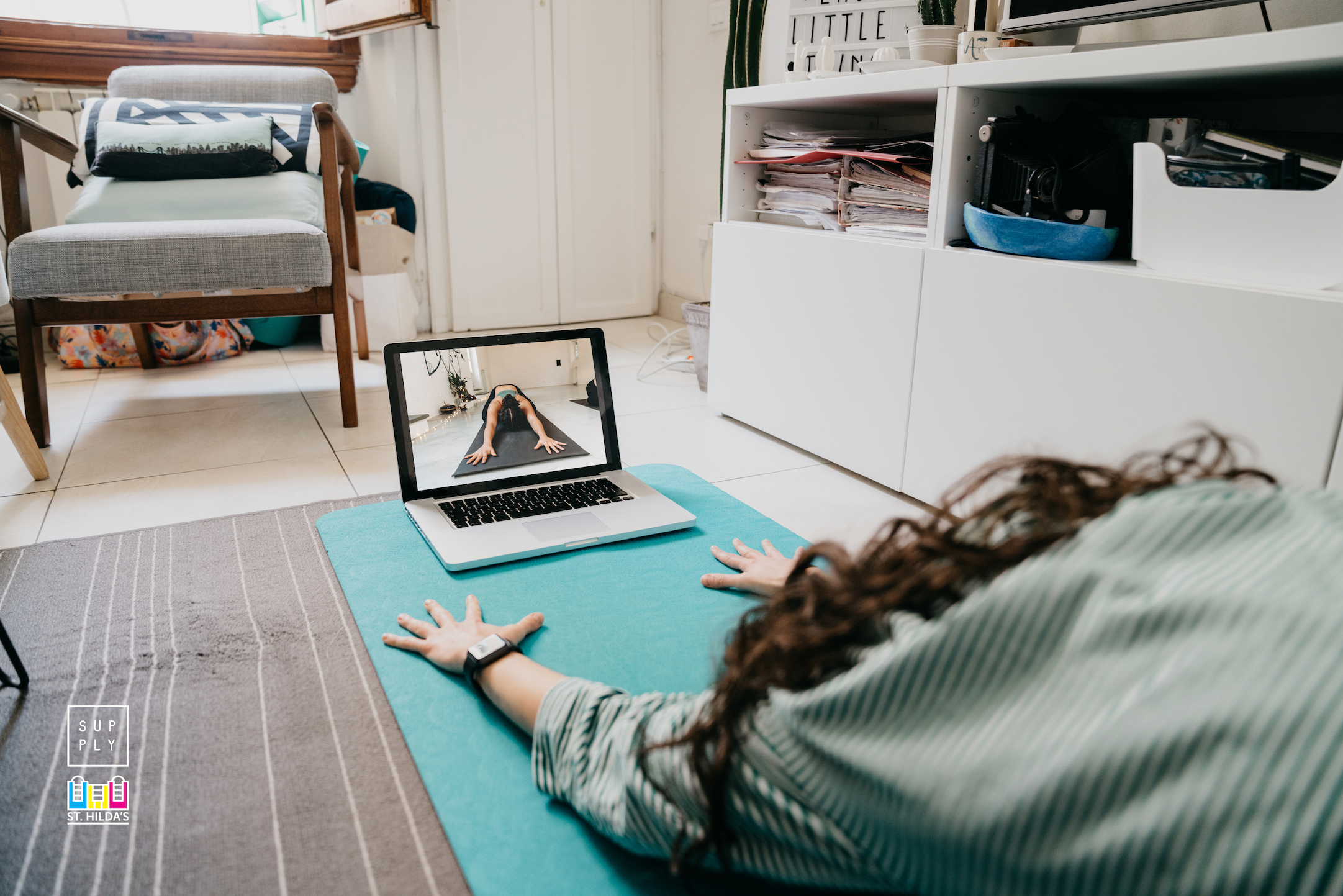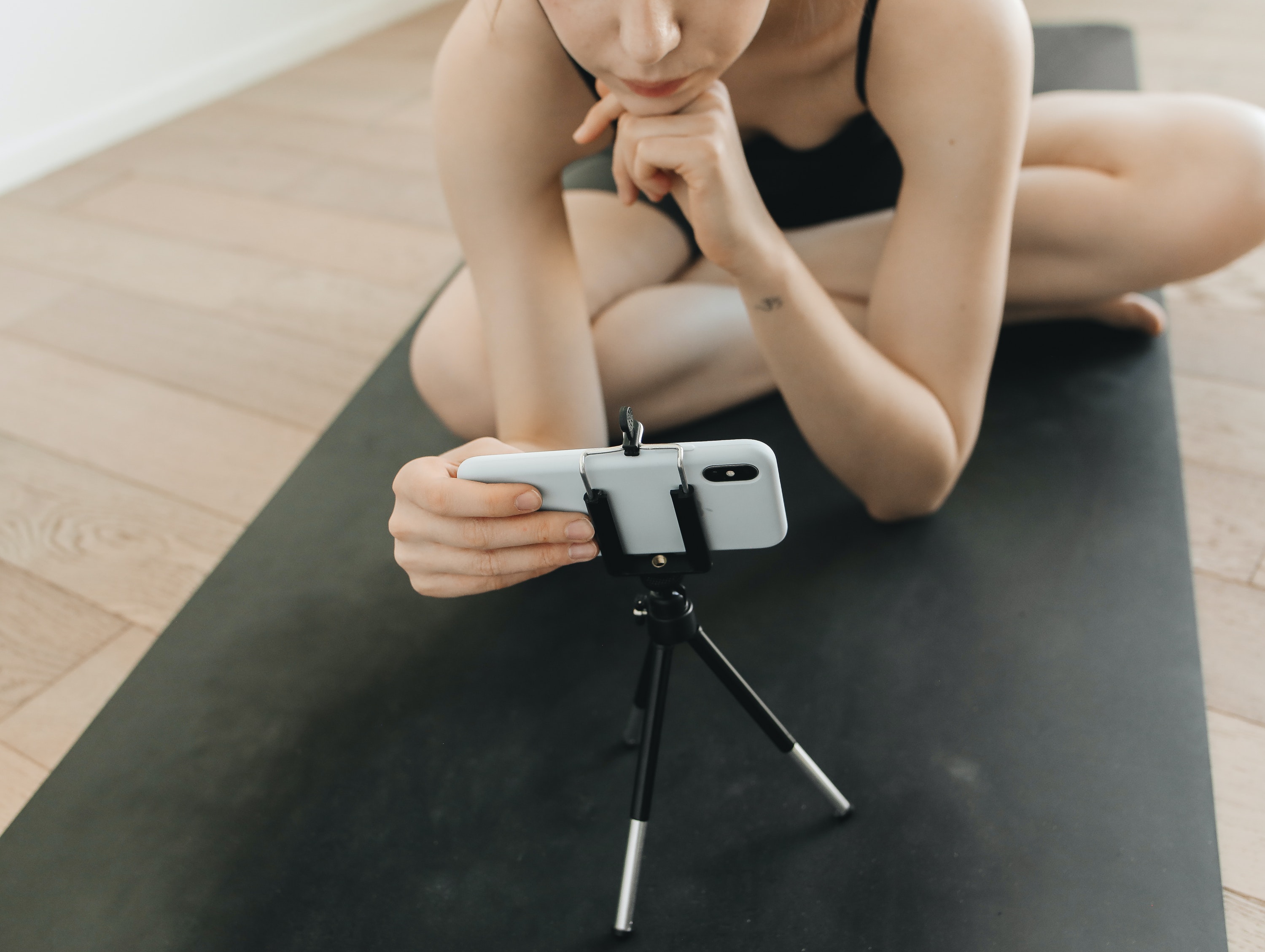Bringing the Body Online
The pandemic lockdown has been an uncertain though enriching time for some. For those who have been privileged to have a safe space as home, pandemic lockdown without our usual ‘third places’ (i.e. social spaces such as churches, mosques, parks, cafes, pubs, clubs, libraries and bookstores) has provided us an opportune time to slow down, reset and recalibrate. It’s also been a reminder that we are more connected than we realise in coping with and navigating this unexpected upheaval. For many yoga studios, facilitators and practitioners, the adaptation of yoga as an offering in the digital world has been vital in order to continue to provide accessibility to wellness and self care. This has been in an effort to respect the need for social distancing without losing community kinship, embodiment, and connection.
The screen might feel like a barrier to a social and embodied interaction but perhaps it can be harnessed as an opportunity to reframe our understanding about the way we relate, communicate and create contact with ourselves and each other.
Suffice it to say, the digital world is a bit of a double edged sword. Most of us are privy to the blight of disconnection and isolation in an increasingly connected age with our time and attention becoming capitalised and commoditised. The boundaries between the personal space and professional space, work time, recreational time and rest time that were already blurring have grown even more unclear, particularly when we’ve been confined to our homes. It not only has conflated our work selves and non-work selves but it’s also been a sleight of hand at its worst where productivity is concerned. The immediate accessibility of information and resulting exchange commands that we be attentive, active and plugged in constantly. It leaves us with very little room for silence, interiority, viscerality, or as coined by artist Jenny Odell “how to do nothing,”a form of activism against “what we currently perceive as productive.” She elaborates that the ‘time is money’ perspective where there must be something to show for the time put in forges the ‘bad’ type of ‘in the now’ — becoming consumed by or consuming whatever is happening at present or what everyone is talking about now.

Yet there’s no denying that the online realm has become an integral part of our lives. Whether we like it or not, our virtual self is part of our identity and day-to-day experience. We maintain mobile contact through a myriad of messaging apps with loved ones from near and far. We proffer glimpses or sweeping views of our daily lives, socio-political opinions, cultural interests and creative inclinations through image, video and written word on social media platforms, which in turn connect us with like-minded individuals across geographies. Tim Urban who authors the long form Wait But Why blog on a variety of topics wrote a fascinatingly detailed explanation on Elon Musk’s transhumanist brain-machine interface company, Neuralink, and in it, he detailed how our devices and the access of information it brings have essentially become an extension of ourselves, another step in the evolution of our brains. His broaching of this interdependence with our gadgetry as an example of how the line between human and machine will blend to a point of being indistinguishable was to dissipate the existing fears around what is already set in motion towards a robot-controlled future. Regardless of whether AI will become the norm or not, the fear and reticence around digital technology even if an inherent part of the way we live, compels us to grapple with the notion of what it is to be human, to identify as a self and inhabit a body.
Facilitating yoga online can seem like an oxymoron in itself. On one hand, yoga as a practice gives us permission to be human, in a body, in relation to others and a place. On the other hand, bringing it online seems to redirect our attention away from our surroundings and relationships to a profit-driven technological landscape that is separating us from our bodies and appropriating our attention and hindering us from what it is to be truly present i.e. deep contemplation and observation of what is transpiring around us. Yet, practicing online where students or clients can practice in the comfort of their homes with guidance allows them to drop and settle into themselves more deeply than if they were to do so in a public space like a studio where the inadvertent comparison of body and ability with others and possibility of touch and adjustment by the teacher can provoke feelings of inhibition, intimidation and self consciousness. A therapist I met cultivates agency by letting her clients decide the place in their home surroundings where they would bring their laptop and practice, setting the space for where they might feel at their safest and most at ease. When one might have been limited previously by the four walls of the studio space, now one has the option and freedom to practice indoors or outdoors, perhaps in their backyard under a tree.

The screen might feel like a barrier to a social and embodied interaction but perhaps it can be harnessed as an opportunity to reframe our understanding about the way we relate, communicate and create contact with ourselves and each other. How might we take advantage of the limitations that social distancing imposes to explore alternative ways of speaking, thinking, looking, touching, moving and breathing? Without another person in physical proximity, how can we first enquire into our own bodies as an experiential resource that can inform the way we interact with others and respond to their body language and gestures accordingly especially when they appear more ‘low-res’ through a screen than it would be in real life?
The process of teaching on Zoom has pushed for much self exploration on my part when it comes to having a body, feeling at ease with it and adapting that body online especially in a time of collective incertitude. In both the online group and one-to-one classes I have been teaching so far, I’ve been examining ways on how to hone deeper sensitivity in the way that I communicate and interact with my clients. Being comfortable in my home has been key to me literally feeling at home with myself, using my senses with my immediate surroundings as an anchor, e.g. feeling the floor as a solid touchstone. This acute awareness reorients me so that I may closely track the verbal dialogue and non-verbal signals between myself and the other person. The presence of the screen may minimise the ability to detect and express micro-expressions, gestures and other details associated with body language. The limitations of its four-cornered frame and two dimensional surface can render interaction awkward and ambiguous. However, faced with these constraints, it has forced me to sharpen other senses e.g. my ability to hear and listen beyond sight and touch which I tend to rely heavily upon. As a result, the process of attuning with the other person has sometimes been through their tone of voice, its rhythm and modulation. In reasserting my body under these conditions, I rework the link between some of my senses previously under-utilised with the making sense of that which cannot be fully expressed.

In the wake of a post-lockdown world, what has emerged is a ‘new normal’ where some social distancing may be an integral part of it. Digital technology as a medium to continue exploring alternative ways to address social isolation and other contributing factors to our state of mental health amid great change in order to maintain outreach, connection, accessibility to health and wellbeing support will be inevitable.
Whatever our lamentations or reservations about the virtual world and its human effects, let us not negate our innate propensity to adapt to change. Now may feel like a pivotal moment when transformation has the potential to occur. What seems destabilising or detrimental may have an effect of bringing to a head certain things which were already pending. It often takes a crisis to disrupt a status quo and shake us out of our complacency. In Paradise Built in Hell, Rebecca Solnit examines and dispenses with the myth that people become divisive after crisis. From the 1906 earthquake in San Francisco to Hurricane Katrina, she provides compelling examples and anecdotal accounts of community resourcefulness, empathy and solidarity that arise in challenging circumstances:
When all the ordinary divides and patterns are shattered, people step up — not all, but the great preponderance — to become their brothers’ keepers. And that purposefulness and connectedness bring joy even amid death, chaos, fear, and loss. … Horrible in itself, disaster is sometimes a door back into paradise, the paradise at least in which we are who we hope to be, do the work we desire, and are each our sisters’ and brothers’ keeper.
How people step up and adapt in the aftermath of disaster is testament to how the existing paradigm can shift dramatically.
If paradise now arises in hell, it’s because in the suspension of the usual order and the failure of most systems, we are free to live and act another way.
If technology was causing us to actively ignore the body before, then in light of the ‘new normal’, as a tool, it has the potential to situate us more fully in the present. It is up to us to use it in a way that gives us more access to (rather than escape from) physical reality so that we may re-engage with our selves, yield greater sensitivity and empathy towards our bodies, the way we relate with others, as well as the body of the landscape in which we live. What may have previously dis-engaged us is calling for a re-evaluation of the existing ties we share with our bodies and our digital environment — a new pattern of attention that can encourage us to redouble on what it is to be human and embodied.